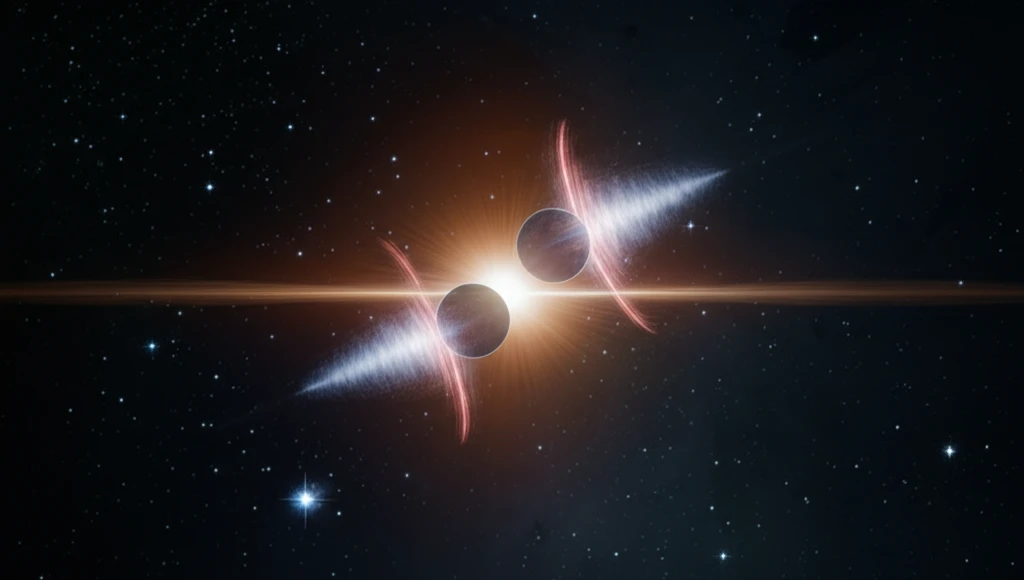
Unlocking the Secrets of Star Systems: What Double-Lined Spectroscopic Binaries Reveal About the Universe
"New Research Reveals the Hidden Dynamics Within Multiple Star Systems and Their Implications for Stellar Evolution"
For centuries, humans have gazed at the stars, mapping constellations and pondering their nature. Modern astronomy has revealed that many stars are not solitary entities but exist in complex systems with multiple companions. A significant portion of these are hierarchical systems, where stars orbit each other in nested configurations, akin to celestial families.
Recent research has focused on understanding these intricate systems, particularly those containing double-lined spectroscopic binaries (SB2s). These binaries are crucial because they allow astronomers to precisely measure stellar masses, radii, and orbital parameters. By studying these systems, scientists can test theories of star formation and evolution, shedding light on the processes that shape the cosmos.
A recent study published in The Astronomical Journal delves into the spectroscopic orbits of subsystems within multiple star systems. This research, led by Andrei Tokovinin, presents new orbital solutions for several SB2s, providing valuable data for understanding the dynamics and evolution of these stellar groupings. The findings contribute to the growing body of knowledge about stellar hierarchies and offer fresh insights into the lives of stars.
What are Double-Lined Spectroscopic Binaries and Why Do They Matter?

Double-lined spectroscopic binaries (SB2s) are stellar systems where two stars orbit each other closely, and the spectral lines of both stars are visible and shift periodically due to the Doppler effect. This phenomenon occurs because as the stars move in their orbits, their light is either compressed (blueshifted) when moving towards us or stretched (redshifted) when moving away. The ability to observe these shifts for both stars allows astronomers to determine key properties of the system.
- Stellar Masses: The mass of each star can be determined with high precision, offering crucial tests for stellar evolution models.
- Orbital Parameters: The orbital period, eccentricity, and inclination can be calculated, providing insights into the system's dynamics.
- Stellar Radii: By combining the orbital data with light curves (measurements of brightness changes), the radii of the stars can be estimated.
- Distance Estimation: SB2s can be used as standard candles to estimate distances to faraway galaxies.
Future Directions: Unraveling the Complexities of Star Systems
The ongoing study of double-lined spectroscopic binaries promises even more exciting discoveries in the future. As technology advances, astronomers will be able to observe these systems with greater precision, revealing even more subtle details about their dynamics and evolution. Future research will likely focus on:
